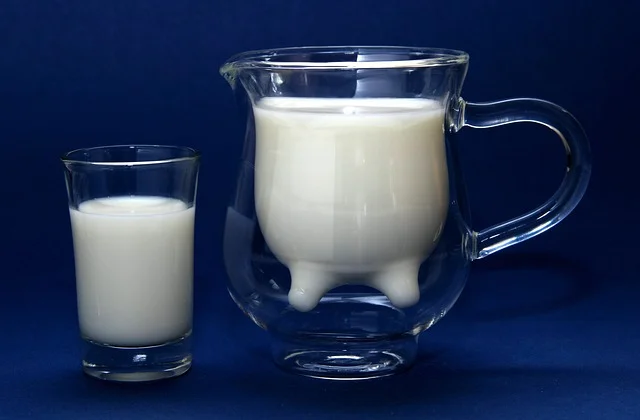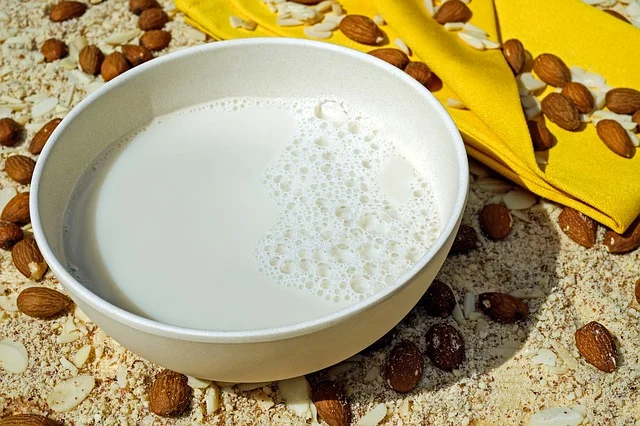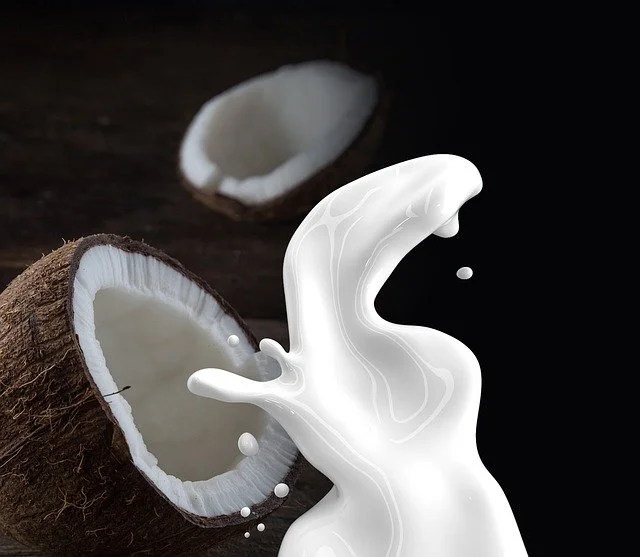How to replace milk if you are lactose intolerant

Cow’s milk is one of the staple foods in different parts of the world. It is drunk by both the poorest and the richest, it has a unique taste and many useful substances in its composition. But, alas, some people have an unpleasant feature of the body – lactose intolerance. This carbohydrate of the disaccharide group is simply not absorbed and causes disturbances in the functioning of the digestive system.
This is because the body lacks or produces a minimal amount of the enzyme lactase, which must break down lactose into parts. And without splitting, the element binds water in the intestine. In addition, gut bacteria cause the milk sugar to ferment. This manifests itself in the form of diarrhea, pain and bloating, nausea, and vomiting.
But what should those who love milk do, because it is contained in many dishes, especially in baked goods, and the food becomes bland without it? There is a solution – substitutes, which are sometimes even healthier than cow’s milk. There are several such formulations, and we will tell you about their energy value and benefits.
Before describing them in more detail, it is worth mentioning the composition of cow’s milk so that you have something to compare with.
Cow’s milk

There are several types of cow’s milk. When taken whole, it has the highest nutritional value: approximately 150 calories per 100 grams, 12 grams of carbohydrates as lactose, 8 grams of fat, and 8 grams of protein.
If you take milk with a 2.5% fat content, then it has 52 calories per 100 grams, 2.8 grams of protein, 2.5 grams of fat, and 4.7 grams of carbohydrates. As you can see, less fatty milk has a much lower calorie content than whole milk. But in the process of removing fat, the content of certain nutrients, such as vitamins E and K, also decreases.
The advantages of cow’s milk are a good combination of a high energy value, as well as a composition rich in vitamins and minerals: beta-carotene, vitamins B, A, D, E, and PP, calcium, potassium, phosphorus, sodium, and other trace elements.
Almond milk

Almond milk is made from ground almonds with water. It may contain starch or other thickening agents for a thicker consistency. Remember that almonds are quite a strong allergen, and in some people, it causes intolerance due to the carrageenan it contains. So, if you are allergic to nuts, first check if your body has a negative reaction to this natural milk substitute.
Almond milk has a low energy value: only 17 calories per 100 grams. Everything is modest here too: for 100 grams of 1 gram of carbohydrates, 3 grams of fat, and 1 gram of protein. Although almonds themselves have higher calorie values, milk is devoid of these advantages. In addition, there is little calcium. But many manufacturers of almond milk additionally add calcium to it, as well as vitamins A and D.
Despite the listed disadvantages, the composition is rich in vitamins and minerals such as magnesium, sodium, phosphorus, iron, potassium, zinc, as well as riboflavin, niacin, thiamine, folate, and other trace elements.
Soy milk

When this milk first appeared on the shelves, many people were indignant at its presence and advocated not to take it, because it is a harmful substitute for cow’s milk, which the “enemy” wants to poison us with. But this is complete nonsense because it contains only soybeans and water.
Unlike almond milk, the calorie content here is almost the same as that of cow’s 2.5% fat content – 54 calories per 100 grams. The composition is also quite close: 3.3 grams of protein, 1.8 grams of fat, and 5.7 grams of carbohydrates.
One of the main benefits of soy milk is that it is a rich source of potassium. In addition, it contains many valuable amino acids, vitamins of groups A, B, and E, minerals like the already mentioned potassium, as well as phosphorus, iron, and calcium. Soy milk is also a source of isoflavones and lecithin.
Even though the drink does not contain lactose, the soy itself can also be an allergen, therefore, as in the case of almonds, you should check the body’s reaction to it before drinking. Another disadvantage of soy milk is a large amount of phytic acid in the composition, which can bind useful minerals and impair their absorption by the body.
Rice milk

The principle of preparation is the same as for the milk listed above: it contains only ground rice and water. To improve the consistency, starch or other thickeners and preservatives are added to the drink.
Of all the substitutes for cow’s milk, rice can be considered, perhaps, the safest, because it is the least likely to cause an allergic reaction or intolerance. This makes it an optimal choice for people who are either lactose intolerant or allergic to nuts and soy.
Rice milk has a fairly low-calorie content – 47 calories per 100 grams. At the same time, at least in terms: 0.1 grams of protein, 1.3 grams of fat, and 12.2 grams of carbohydrates.
The composition contains vitamins of group B, D, and PP and calcium, magnesium, copper, and iron. Rice milk is close enough to cow’s milk but has little vitamin A in terms of nutrient content. However, manufacturers enrich the drink with this vitamin. Note that, since rice has a low percentage of fat (0.3 grams per 100 grams), the fat content of rice milk is often achieved by adding sunflower oil. Therefore, if you are allergic to it, you should choose another option.
Coconut milk

This cow’s milk substitute is increasingly seen on store shelves. As one might think, a coconut drink does not consist of coconut water, but grated ripe coconut pulp mixed with water. By the way, contrary to popular belief, coconut is not a nut but a fruit, and therefore people with allergies or intolerance to nuts can consume such milk. Still, the drink can cause allergies, so, as with any cow’s milk substitute, it is worth checking the body’s response to it.
Coconut milk is high in calories and contains between 152 and 230 calories, depending on whether you choose a regular or non-fat drink. If we take the option with a calorie content of 152 calories, then the composition of the BJU per 100 grams will be as follows: 1.8 grams of protein, 14.9 grams of fat, and 2.7 grams of carbohydrates.
Since coconut does not contain calcium, vitamins A and D, manufacturers enrich their milk with it during production. The drink is rich in vitamins B, C and PP, contains manganese, selenium, zinc, iron, potassium, phosphorus, magnesium, and sodium, as well as dietary fiber that promotes good digestion.
Like almond milk, coconut milk contains carrageenan, which can cause digestive problems in some people.
Oat milk

One of the most affordable milk replacers on the market. Like all the other options listed above, it is made from basic raw ground materials, in this case, oats, mixed with water, with some substances that help increase fat content, enrich with vitamins, and are preservatives.
Its calorie content is one of the lowest among cow’s milk substitutes: 44 calories per 100 grams. The composition is quite modest: 0.3 grams of protein, 1.5 grams of fat, and 7 grams of carbohydrates. As with rice milk, oat milk is one of the best options for lactose and nut intolerant people. But you need to understand that oats are a plant from the family of cereals, so people with allergies to these crops should refrain from eating them.
Oat milk is rich in vitamins and minerals. It contains vitamins of group B and D, zinc, selenium, copper, iron, fluorine, silicon, and other elements. Calcium is quite small, but manufacturers add it during the manufacture. By the way, oat milk is an excellent antioxidant and normalizes metabolism.




